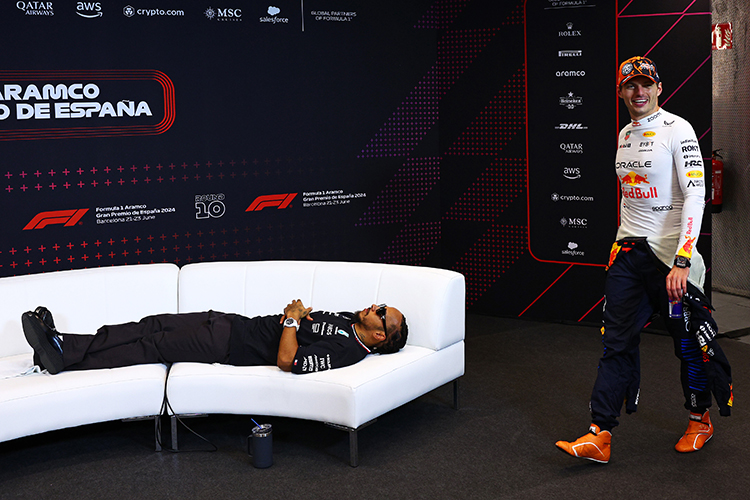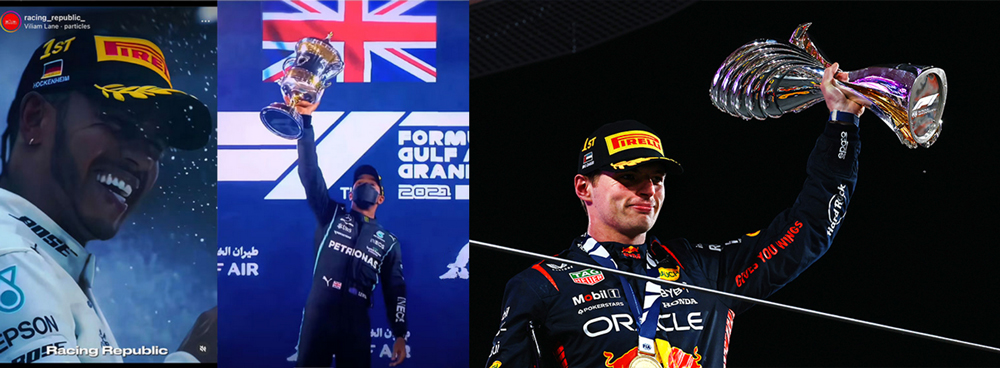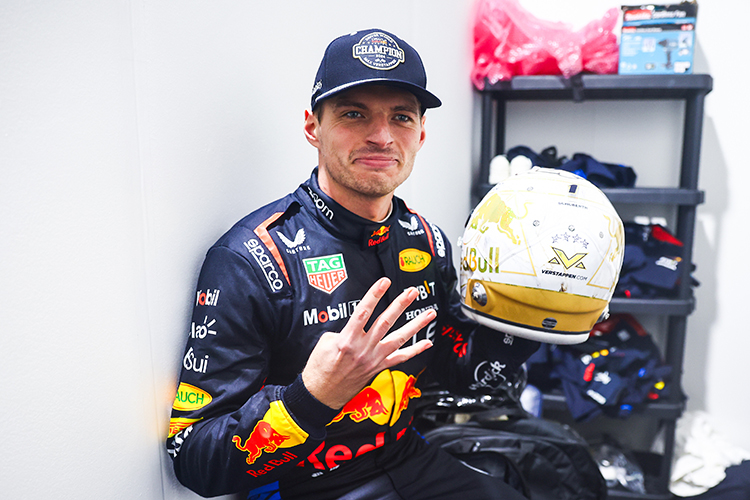How F1 Drivers Communicate With Teams During Races
How F1 Drivers Talk to Their Team During Races: Radio, Codes and Strategy
How F1 drivers and engineers communicate mid-race: radios, secret codes and split-second strategy that decides pit stops, tyre calls and wins. In Formula 1.
If you could ride shotgun in a Formula 1 car, you wouldn’t just hear a V6 screaming behind your head—you’d hear a constant, clipped dialogue that can win or lose a Grand Prix. Driver and race engineer trade vital information in sentences that last seconds but carry tons of meaning. Here’s how that conversation works, what gets said (and what doesn’t), and how teams keep their cards close to their chest at 300 km/h.
The heartbeat: radio between driver and race engineer
- Core link: Every driver has a dedicated radio channel to the pit wall. The race engineer is the primary voice they hear, filtering inputs from strategists, performance engineers, tyre specialists, and the sporting director.
- Push-to-talk: The driver presses a button on the steering wheel to speak; the engineer talks from the pit wall. Radios are digital, noise-cancelled and tuned to cope with engine/airflow noise, but messages can still be crackly—hence short phrases and confirmations.
- Constant triage: The engineer prioritizes. Safety and reliability trump everything. Strategy, tyre life, traffic, pace cues and procedural reminders follow.
What they actually talk about
Strategy calls
- Pit stop instructions: “Box, box” (pit now) vs. “Box opposite” (do the opposite of the car you’re racing).
- Undercut/overcut windows, “push now” laps, and “target lap time 1:36.2”.
- Responses to Safety Car/Virtual Safety Car: maintain positive delta, pit if the window opens.
Tyres and grip
- Stint length planning (“Plan A/B/C”), managing graining or blistering, surface vs. carcass temperatures.
- “Balance” feedback from the driver: entry oversteer, mid-corner understeer, traction issues—used to recommend in-car changes.
Car health and management
- Cooling/brake temps and lift-and-coast distances (“lift 50 meters into Turn 12”).
- Energy deployment settings (hybrid harvesting and deployment), engine maps, differential and brake balance tweaks.
- Reliability workarounds (“default” procedures like “Fail 22, confirm” you sometimes hear from Mercedes-origin hardware).
Traffic and racecraft
- Gaps in traffic for pit exits, blue flags coming, who’s pushing on what tyre.
- Yellow flags, slow cars, local hazards (teams mirror Race Control messages to the driver).
Pace cues and motivation
- “Hammer time” style calls to push; or “manage for two laps” when saving tyres.
- Sector comparisons to a rival or teammate: “You’re strong in S2, down in S3.”
The secret language: codes, plans and deception
- Plans and colours: Teams assign plans (A/B/C) to tyre sequences and pit stop timings agreed pre-race. They can switch on the fly without spelling out compounds over the air.
- Numeric shorthand: “Strat 5” or “Scenario 7” refers to pre-set engine/hybrid mapping and energy usage strategies. Diff mid +1, BB- (brake bias) clicks, energy mode toggles—each team has its own lexicon.
- Phrases with history:
- “Multi 21” (Red Bull, Malaysia 2013) was an infamous team-order code.
- “Hammer time” (Mercedes) means flat-out push.
- Why code? Broadcast radios are monitored; TV can play snippets live; rivals watch. Codes hide tyre choices, pit intentions and reliability tweaks while keeping messages concise.
The tech behind the talk
Hardware
- The car carries a compact digital radio unit and antenna (commonly near the roll hoop/engine cover) feeding helmet speakers and a tiny mic inside the liner.
- Pit wall uses professional intercom networks linking every department; the engineer selects the driver channel via push-to-talk.
Frequencies and coverage
- Trackside systems are licensed per venue, with antenna repeaters to cover dead zones (tunnels and concrete can still cause dropouts—Monaco, we’re looking at you).
Data and telemetry
- Car-to-pit telemetry streams constantly: tyre temps, fuel flow, ERS status, brake energy, suspension metrics. Teams use this to decide when to pit, manage cooling, and guide settings.
- Pit-to-car performance changes via telemetry are not allowed—no remote driving the car. The driver must make changes manually when instructed.
Who else is in the room? The pit wall and mission control
On the pit wall
- Race engineer: the driver’s single point of contact.
- Performance engineer: interprets driver feedback vs. data.
- Strategists: run live models for pit windows, tyre life and Safety Car probabilities.
- Sporting lead: handles Race Control, regulations and procedures.
Back at base (mission control)
- Many teams run a “remote garage” at the factory, mirroring every data feed and camera angle with a larger analysis team. They don’t speak to the driver directly; they advise the race engineer who keeps the radio clear.
Beyond radio: the old-school backups
- Pit board: Still used. If the radio dies, or during heavy radio traffic, teams hang a board over the pit wall with position (P3), gap (+2.1), in-lap (“BOX”), tyres (coded), or laps remaining.
- Hand signals and pit gantry: Mechanics and the front-jack crew can signal “box now” or “abort” if needed at the last second.
- Steering wheel displays:
- The driver sees car status, revs, deltas for VSC/SC, flag warnings and system alerts on the LCD dash.
- Teams can’t beam performance-changing commands into the car; messages are either FIA marshalling/info or car-generated prompts. Engineers rely on voice for instructions like “Strat 6.”
Radio rules: what’s allowed (and what isn’t)
- Teams can talk freely about safety, reliability and strategy.
- The engineer can request changes to car settings the driver can legally make from the cockpit (engine modes, diff, brake balance, energy strategies).
- No remote adjustments from the pit wall that influence performance.
- “Driver coaching” restrictions that once limited what engineers could say were largely rolled back after 2016; detailed help with driving the car (like telling exact brake points every corner) remains a sensitive area and is governed by current FIA guidance.
Expect the FIA to tweak guidelines from time to time; teams adapt quickly with phrasing and codes.
When radios go wrong
- Pre-briefing saves the day: Before the race, driver and engineer agree fallbacks—e.g., “If comms fail in the first stint, follow Plan B and pit on Lap X unless undercut threat; display ‘BOX’ board if pitting earlier.”
- Visual cues: Pit board, garage signboards with tyre colours or numbers, mechanics ready with the correct tyre stack to signal the choice.
- Conservative strategy: If completely blind, some teams extend stints or mirror a direct rival’s moves they can see on track.
Can rivals listen in?
- Teams and officials can monitor radio traffic through authorized systems, and F1’s broadcast team selects clips for TV and the official app.
- Rivals do not rely on eavesdropping; they glean intel from the broadcast, timing screens and patterns on track. The real secrecy comes from codes, plans, and saying just enough.
Situational comms: Safety Car, VSC and starts
Safety Car/Virtual Safety Car
- The driver gets deltas and warnings on the dash; the team reinforces: “Keep delta positive,” “Pit window is open, box this lap,” or “Stay out, traffic in pit lane.”
Race starts and restarts
- The team can brief clutch and power settings pre-race; formation lap and restart procedures are tightly scripted. Once it’s go time, comms are minimal until Turn 1 chaos clears.
Blue/yellow flags and penalties
- The FIA marshalling system lights the dash and trackside panels; engineers repeat and guide: “Blue for car behind, do not hold up,” “Five-second penalty to serve at next stop.”
Why the wording is so clipped
- Noise, speed and cognitive load: At 5G through a corner, the driver has bandwidth for about five words. Engineers speak in headlines: instruction, number, confirm.
- Ack/confirm culture: “Box, box.” “Box confirmed.” If the driver doesn’t confirm, assume he didn’t hear it—engineers will repeat at the next straight.
Iconic radio moments (and what they meant)
- “Multi 21” (Red Bull): A coded team order—hold positions, car 2 then car 1.
- “Leave me alone, I know what I’m doing” (Kimi Räikkönen): A driver pushing back on information overload while managing tyres.
- “It’s hammer time” (Hamilton/Mercedes): Switch to maximum pace for a critical lap sequence.
- “Plan B” (Ferrari): A switch to an alternate pit/tyre sequence without spelling out the compounds.
A quick glossary for fans
- Box: Pit now.
- Box opposite: Do the opposite of the rival’s pit decision.
- Delta: Time target under SC/VSC; must stay positive (slower) relative to a reference.
- Lift and coast: Come off throttle earlier to save fuel/cool brakes and engine.
- Strat/Scenario/Mode: Pre-set maps for engine and hybrid deployment.
- Default/Fail codes: Reliability procedures to re-initialize or bypass systems.
- Undercut/Overcut: Pit earlier/later to gain track position via tyre offset.
- Push now: Maximum pace required—often to secure an undercut, gap, or avoid an undercut.
The competitive edge: why great comms win races
- The right call, the right lap: A one-lap earlier pit stop can swing track position; clear, trusted comms make the decision stick.
- Tyre life vs. pace: The engineer translates data into instructions the driver can action in corners 3, 7 and 11—“protect rears in traction zones”—without a driving lesson.
- Risk management: From cooling temps to brake fade, early warnings and quick in-car changes keep a car in the fight to the flag.
Final lap
F1 radios are the sport’s nervous system: fast, ruthless, and precise. Behind every “Box, box” are armies of strategists and pages of pre-race plans. Behind every “Hammer time” is a driver flipping a dozen switches while braking from 330 to 80 in a hundred meters. And behind every clipped code is the difference between a champagne spray and a what-if. Next time you hear a two-second radio snippet on TV, know there’s a whole race of meaning packed into it.
Up Next



